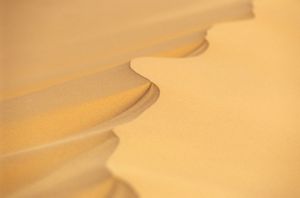Difference between revisions of "GCDAMP Sediment"
Cellsworth (Talk | contribs) |
Cellsworth (Talk | contribs) |
||
| Line 21: | Line 21: | ||
------------Portal list on righthand side----------> | ------------Portal list on righthand side----------> | ||
|style="width:60%; font-size:150%;"| | |style="width:60%; font-size:150%;"| | ||
| − | + | Erosion of sandbars (beaches) along the Colorado River in Grand Canyon was first reported in the early 1970s, approximately 10 years after completion of Glen Canyon Dam. Since then, scientific studies have been conducted to monitor changes in sandbars and changes in the amount of sand stored on the bed of the river. One of the outcomes of these studies has been the implementation of flow experiments intended to rebuild eroded sandbars, especially by the release of controlled floods, also called “high-flow experiments,” from Glen Canyon Dam. The sediment and geomorphology projects at Grand Canyon Monitoring and Research Center include the collection and processing of data to provide information needed to conduct controlled floods and to evaluate the outcome of each controlled flood and the long-term effects of controlled floods and normal dam operations on sediment-related resources. | |
| − | + | ||
|}<!-- | |}<!-- | ||
| Line 103: | Line 102: | ||
2016 | 2016 | ||
| + | *[https://pubs.er.usgs.gov/publication/pp1823 '''Long-term continuous acoustical suspended-sediment measurements in rivers - Theory, application, bias, and error'''] | ||
*[http://www.usbr.gov/uc/rm/amp/twg/mtgs/16jan26/documents/AR01_Topping.pdf '''Project 2: Streamflow, Water Quality, Sediment Transport, and Sand Budgets in the Colorado River Ecosystem'''] | *[http://www.usbr.gov/uc/rm/amp/twg/mtgs/16jan26/documents/AR01_Topping.pdf '''Project 2: Streamflow, Water Quality, Sediment Transport, and Sand Budgets in the Colorado River Ecosystem'''] | ||
*[http://www.usbr.gov/uc/rm/amp/twg/mtgs/16jan26/documents/AR02_Grams.pdf '''Sandbars and Sediment Storage in Marble and Grand Canyons: Response to Recent high-flow Experiments and Long-Term Trends'''] | *[http://www.usbr.gov/uc/rm/amp/twg/mtgs/16jan26/documents/AR02_Grams.pdf '''Sandbars and Sediment Storage in Marble and Grand Canyons: Response to Recent high-flow Experiments and Long-Term Trends'''] | ||
Revision as of 13:53, 19 May 2016
|
|
Erosion of sandbars (beaches) along the Colorado River in Grand Canyon was first reported in the early 1970s, approximately 10 years after completion of Glen Canyon Dam. Since then, scientific studies have been conducted to monitor changes in sandbars and changes in the amount of sand stored on the bed of the river. One of the outcomes of these studies has been the implementation of flow experiments intended to rebuild eroded sandbars, especially by the release of controlled floods, also called “high-flow experiments,” from Glen Canyon Dam. The sediment and geomorphology projects at Grand Canyon Monitoring and Research Center include the collection and processing of data to provide information needed to conduct controlled floods and to evaluate the outcome of each controlled flood and the long-term effects of controlled floods and normal dam operations on sediment-related resources. |
| TBD (Motions) |
TBD (TBD) |
TBD |
|---|
